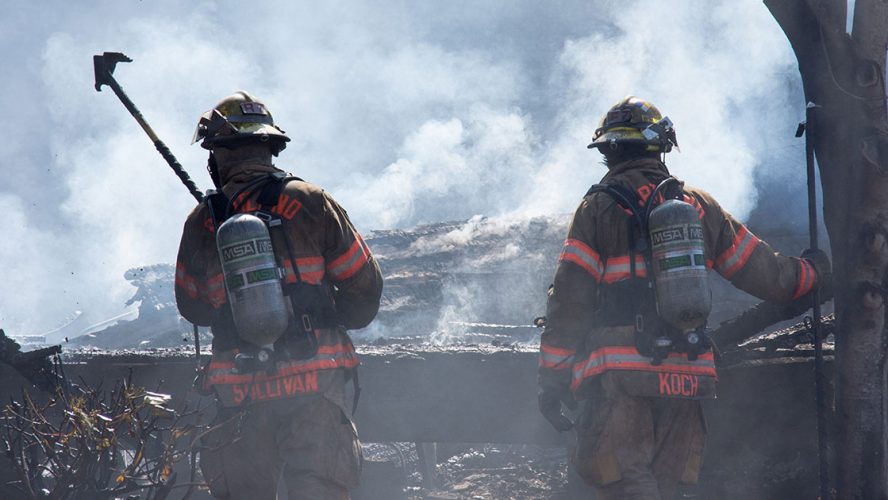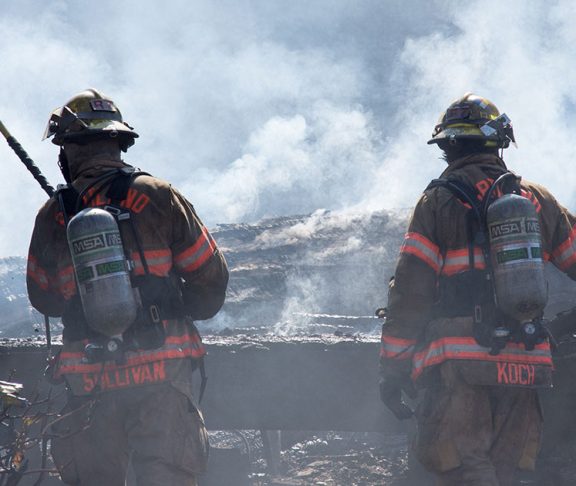Wildfires are eye-catching, mesmerizing, terrifying, and heralding dangers that may ultimately prove life-changing.
Standing on the frontlines in the wilderness and in our neighborhoods, firefighters and other emergency responders face hazards that are equally familiar and unfathomable, including heat stress, smoke inhalation, exposure to physical, ergonomic, biological, and chemical hazards, fatigue, psychological stress, and more.
Undeterred by these risks, firefighters and other workers continue putting themselves in harms’ way. The fact they continue to do this every day is truly inspiring. It is not by chance that they remain among the most honored members of our communities.
A high price
Protecting our communities comes at a high price, however. Firefighters have high rates of certain cancers, injuries, diseases that affect the heart and lungs, and other illnesses.
Reducing these risks requires constant vigilance and the concerted efforts of businesses, professional societies, unions, other stakeholders, and government to provide funds to purchase personal protective equipment, training on proper use, cultural changes to improve ingrained habits and practices, and research to pave the way for safety, health, and technological breakthroughs.
Wildfires impact more than just firefighters. Everyone who lives or works in a community also faces their own set of related hazards.
The immediate dangers of wildfires include heat and smoke. Ash and other burned substances may be lofted high into the air and carried long distances by winds. Impacts can reach people hundreds of miles away from the burn zone and include effects on air, water, and soil quality.
Even after the smoke has cleared, hidden dangers may remain. Demolition, cleanup, and reconstruction activities can cause settled particles to become airborne again, presenting health concerns.
Headaches, and irritation of the eyes, nose, and throat aren’t the only health problems smoke can cause. Wildfire smoke particles can penetrate deep into your lungs, aggravating chronic heart and lung diseases. People with asthma, pulmonary or cardiovascular diseases, and those in vulnerable populations, such as pregnant women, children, teenagers, and the elderly, are all at greater risk of developing or aggravating these health conditions.
People returning home after a wildfire may face hazards including hot spots that could be hidden throughout a home, including in vents, under a deck, in crawl spaces or in the attic. There could be smoldering vegetation or parts of a home, or damaged propane tanks, gas lines, or gas or electric meters. Floors, walls, and ceilings may also be weakened, posing additional hazards. Debris may contain items with very sharp edges.
Don’t take chances
The best way to reduce these risks is to avoid exposure to these hazards in the first place. Those at risk of exposure to wildfire smoke should consult local air quality reports and heed the advice of authorities.
Before returning home, people should check with local officials. After arriving at the property, they should avoid reaching into or sifting through debris and ash, and wear NIOSH approved masks (known as N-95 or P-100) that are appropriately fitted and tested, as well as googles, a long-sleeved shirt, and closed-toe shoes or boots.
Protecting our neighborhoods requires community-wide collaboration before, during, and long after a wildfire. By working together and equipping ourselves with knowledge, we can reduce risks to firefighters, other disaster response workers, volunteers, and homeowners. To learn more and join a growing public engagement campaign, visit www.ThinkActFireSmart.org.For more information, visit bit.ly/WidfireRecoveryCenter.



